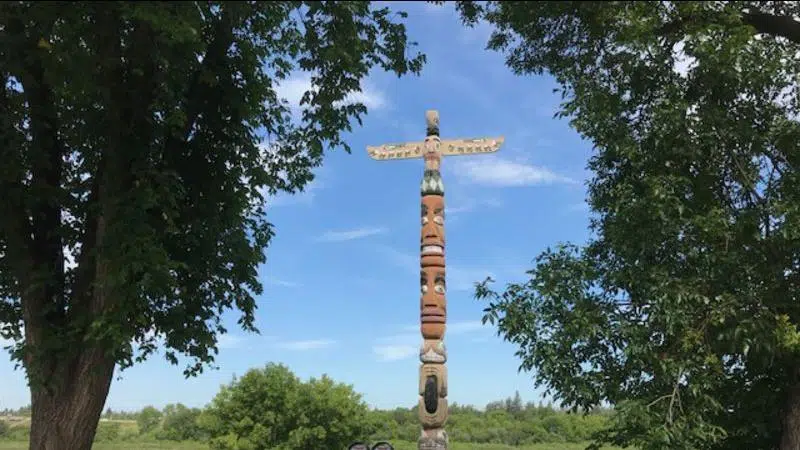
Totem pole heading for artist’s family home
Darlene Stonechild is preparing to bring a piece of her family’s history – and an iconic Prince Albert landmark – home with her to Okanese First Nation.
Her brother, Dale Stonechild, a prolific artist known primarily for his paintings, is one of the carvers behind the totem pole on the riverbank.
The pole was created and gifted to the city of Prince Albert by a group of inmates from Saskatchewan Penitentiary in 1975. Earlier this summer it was announced that it would be removed because of safety concerns caused by significant rotting at the base.
Judy MacLeod Campbell, the city’s arts and cultural director, told paNOW they followed cultural protocols in deciding what to do next with the damaged pole. Having been told that the lead carver, James Sutherland, had likely died, and without contact information for his family, they next consulted with elders and knowledge keepers from the Indigenous community in Prince Albert.



